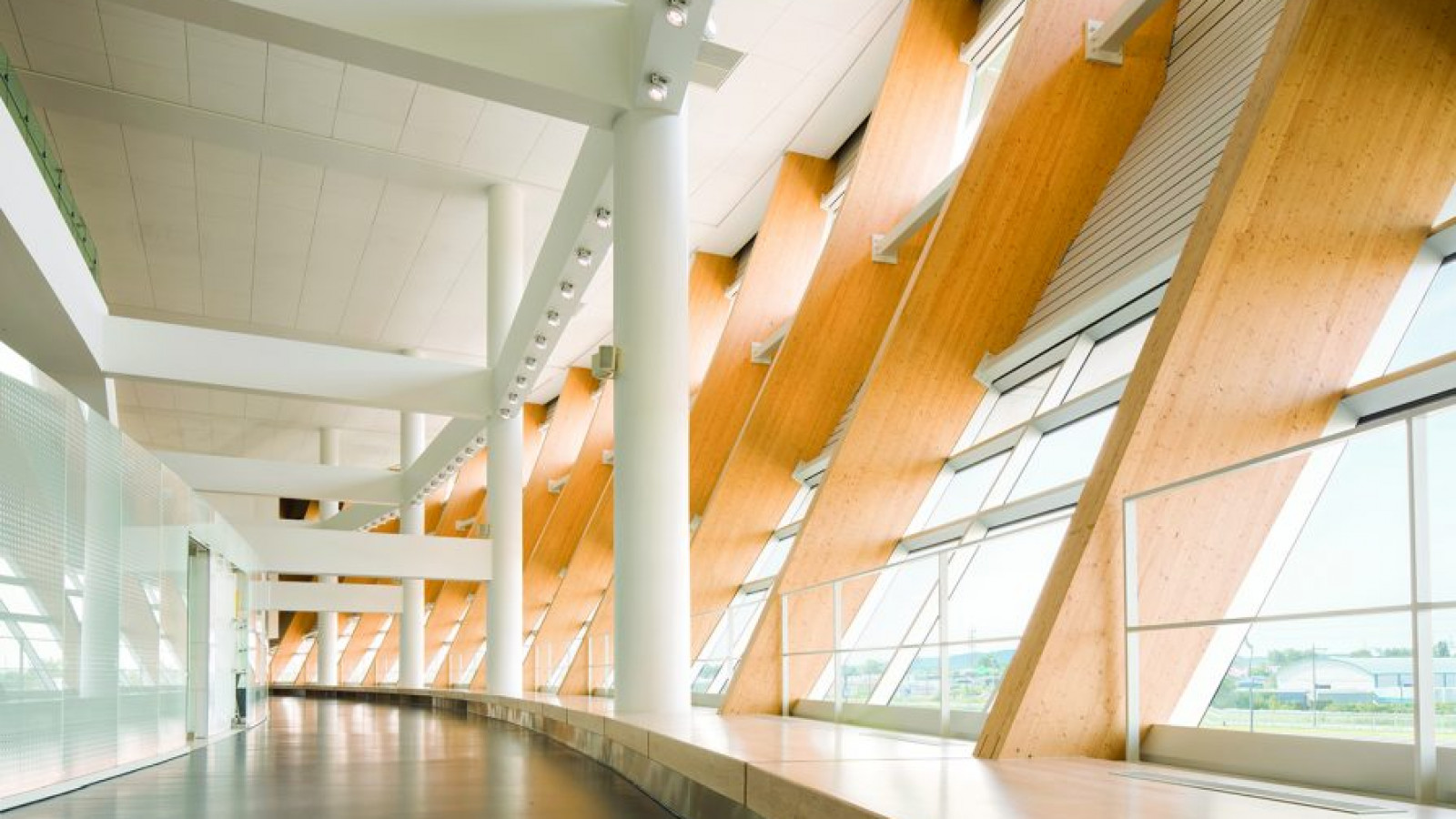In our most recent article we highlighted that hybrid mass timber buildings, the rising stars on the construction horizon, are integrated systems with components made from various materials.
We advocated that comprehending how these systems work overall will create a better understanding of each component and its role within the system.
To offer an adequate, compliant and elegant passive fire solution for mass timber structures we need to understand more of the complexity, which is defined by the interplay of these components. The following aspects are important to keep in mind:
- Overall design of the building (hybrid, open floor, placement of openings)
- Nature of the main substrate (combustible)
- Specific composition of building materials used
- Methods of construction/build process
We want to focus on two concepts traditionally used in passive fire design to improve the fire performance of a timber assembly:
- Indirect — Protection by substrate design: Since wood has an inherent fire resistance, members can be left exposed and their cross sections can be designed, based on char calculation, to resist fire long enough to keep their structural integrity.
- Direct - Protection with fire-resistant materials:
Non-combustible, approved materials are used to cover up (encapsulate) the timber. These materials first create an incombustible barrier, but later evolve to perform as a heat transfer barrier.
Traditionally, structural members in buildings are encapsulated with plasterboard, cementitious materials or intumescent coatings, a method that has been widely used for ferrous and non-ferrous substrates.
Encapsulation materials primarily do not have the same purpose as membranes contributing to the fire-resistance ratings of mass timber elements or fire separations. It is important to understand the difference between these two concepts.
Encapsulation vs fire resistance
The objective of Encapsulation is building safety — from very early on in the build.
Encapsulation extends the duration of time before a combustible structural element is exposed to fire, delaying its ignition and possibly limiting its subsequent contribution to the fire. The goal is to protect the structural element underneath but also to protect the unprotected structures surrounding it — not only to keep their structural integrity but to also prevent an inferno caused by a substrate that is inherently combustible.
An Encapsulation rating is the time in minutes that a fire-resistant insulative material (or assembly of materials) will limit the temperature of the substrate to below its failure temperature, e.g., 300°C for mass timber elements.
Encapsulation is normally applied to structural elements such as beams, columns and floors. The goal of the encapsulation is to save the structure that’s been exposed to a fire (e.g., during construction), and to reuse it without the need for rehabilitation.
The objective of fire-resistance is people safety – more relevant towards the finalising of the build.
The primary objective of fire separation requirements is to limit the spread of fire throughout the building — or to other buildings — and prevent the collapse of buildings long enough for occupants to exit the building safely and for fire services to respond.
Fire separating elements divide the building into distinct fire zones called ‘fire compartments’, containing fire for designated time periods by utilising fire resisting walls, floors, doors, ducts and so on.
A fire-resistance rating is the time in minutes that a structural element can carry an applied load and withstand the passage of flame/gases and the transmission of heat during a standard fire under specific fire test conditions.
Advantages of encapsulating mass timber with intumescent coatings
As discussed, some of the biggest advantages of EWP structures are that the build process is fast, clean and smart and the finished space is natural and healthy with a low carbon footprint.
Nevertheless, wood is and stays a combustible material.
The above factors are of critical importance when considering a compliant and smart passive fire design for mass timber structures. We will show how a thin-film, waterborne and low VOC intumescent coating allows you to not only overcome the “shortcomings” of EWPs, namely their combustibility, much earlier in the build process, but furthermore how to enhance the specific advantages of mass timber construction.
Neutralising the disadvantages of a combustible material – fire safety during construction
Fire design of EWP structures typically involves oversized members which are designed such as the virgin solid timber remaining beneath the char layer is able to support the required loads. The resulting high cross sectional size combined with the increasing height of current mass timber buildings leads to two things: increased weight and increased embedded fuel load.
This consideration plays an essential role for several reasons.
Fire safety during construction:
It is crucial to encapsulate EWPs early on in the build process, as the construction phase presents a higher fire risk due to exposed timber fuelling the fire. During these initial phases the building is highly vulnerable, as active fire protection (sprinklers) and passive fire-protection using plasterboard cannot be completed until the building is weathertight.
The lack of fire separations stopping the fire from spreading, on the one hand, and the massive fuel load present adding substantially to the fire development and time until decay on the other, pose a threat to the already erected structural timber members, leaving the whole building at risk.
The contribution of exposed timber to the fire intensity can be significant for firefighters and neighbouring buildings. Self-extinction and delamination are still not fully understood, thus not controlled.
Costs of reinstatement:
Replacing burned elements, which are either structurally unsound or charred to an extend that they need reinstatement, is very costly, labour and time intensive. The same holds true for rehabilitating only parts of EWPs. Therefore, damage should be managed and reduced to members that are going to be exposed due to aesthetic requirements.
All of the above clearly shows the importance of reducing hazards and mitigating and managing the risks of fire as early as possible in the project; to protect the people on site, the structure itself and adjacent buildings.
With the current use of plasterboard as a fire resistant insulative material this is impossible, as it requires the building to be weathertight. An intumescent coating on the other hand, only requires the building envelope to be watertight, therefore it can offer protection much earlier.
The intumescent coating can deliver on several crucial aspects, ensuring the members structural adequacy and reusability by protecting it from charring. The intumescent encapsulation gives fire fighters enough time to extinguish the fire and after the insulative protective char layer is removed, leaves behind an intact EWP that can be recoated without remediation, and in a short timeframe.
Additionally, applying a 1mm thick layer of thin-film intumescent will protect the EWP member sufficiently, resulting in the substantial reduction of its cross sectional size. When applied across all members, the overall construction weight is significantly reduced.
Optimising passive fire design to enhance the advantages of mass timber construction
Encapsulating with a new generation intumescent coating has several benefits compared to traditional methods, e.g. plasterboard. In smart and lean construction, like mass timber, these benefit align with and enhance the characteristics of the structure.
Waterborne intumescents can be applied at a rate of 400m² a day by two people, drastically reducing application time, workers and trades on site and allowing follow-up trades to move in faster. This captures the advantages of an increasingly fast build.
With intumescents there is no necessity for cutting and assembling which reduces dust, noise and dirt — essentially no waste is created, manufacturing has a much lower carbon footprint. This ties into the environmentally friendly overall balance of a mass timber building
Steel connectors, commonly used in EWP construction, allow heat to be transferred into the timber, provoking measurable char depth. Spraying an intumescent can protect these connectors at the same time as the mass timber element.
The benefits further extend to the coating’s dual purpose: Encapsulating and at the same time contributing to a required fire-resistance rating later on in the build, when services and linings are installed. Optimally, architects should include intumescents in their design phase so all the benefits from this encapsulation method can be reflected in the building schedule.
Overall, fire-resistant coatings are a lean solution that allow us to significantly reduce the time required for encapsulation as well as labour and transport costs, create minimal waste and allow for a more environmentally friendly solution with a low carbon footprint.
Conclusion
Fire safety during construction is essential as the building is especially vulnerable. Only intumescent coatings can protect structural mass timber elements during these early stages. But they not only provide the earliest compliant passive fire solution possible, they are also smart and can align with and enhance the benefits that mass timber structures bring with them.
If you think about it, using intumescent coatings for encapsulation is like sending an email for the first time. After you have tried it, you wouldn’t go back to using a fax machine.




























 Most Popular
Most Popular Popular Products
Popular Products


